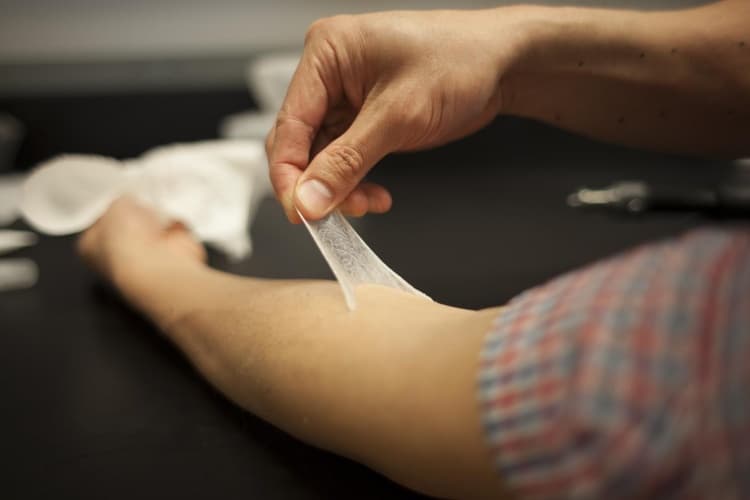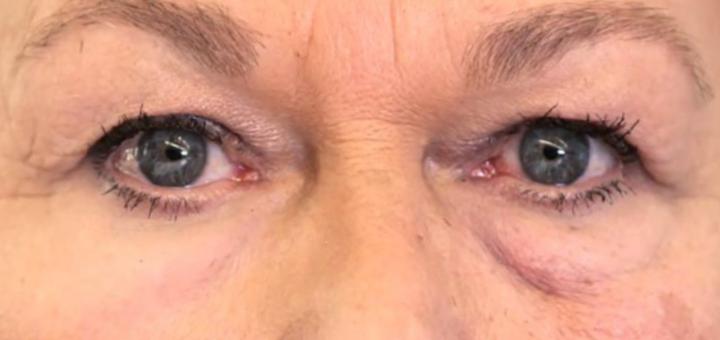
The silicon-based polymer is delivered to the skin in two stages. Polysiloxane components are first applied in a cream-like formula. A second cream containing a platinum catalyst is then applied, inducing the polymer to form a strong cross-linked film that remains on the skin for up to 24 hours. This cross-linked polymer layer (XPL) is essentially imperceptible.
“It's an invisible layer that can provide a barrier, provide cosmetic improvement, and potentially deliver a drug locally to the area that's being treated,” said Daniel Anderson, an associate professor in MIT's Department of Chemical Engineering and one of the authors of the paper, published in Nature Materials. “Those three things together could really make it ideal for use in humans."
The researchers have conducted a number of tests on the XPL to assess its safety and effectiveness. One test saw the material applied around the eyes to stretch out the skin and reduce ‘eye bags’. The compressive force tightened the area for a period of 24 hours. Another study saw the material used on a forearm to test its elasticity. When stretched, it returned to its original position faster than untreated skin.

"Creating a material that behaves like skin is very difficult," said Barbara Gilchrest, a dermatologist at Massachusetts General Hospital and an author of the paper.
"Many people have tried to do this, and the materials that have been available up until this have not had the properties of being flexible, comfortable, nonirritating, and able to conform to the movement of the skin and return to its original shape."
During the research the team created a library of more than 100 possible polymers, all of which contained the chemical structure siloxane: a chain of alternating atoms of silicon and oxygen. Each polymer was tested in search of the one that would best mimic the appearance, strength, and elasticity of healthy skin. The XPL that was eventually chosen can return to its original state after being stretched over 250 per cent. In comparison, actual skin has a limit of about 180 per cent.
XPL is now being spun out into a company called Olivo Laboratories, a startup formed to focus on the technology’s further development.




Poll: Should the UK’s railways be renationalised?
If only the track is nationalised then it is an emasculated one with limited function and improvements will be focused on existing commuter and large...